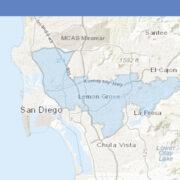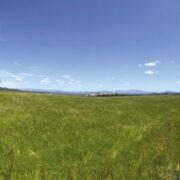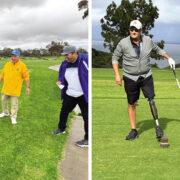WHILE doing research at the Library of Congress in Washington DC on the presence of natives of Las Islas Filipinas in Louisiana in the 1700s, I chanced upon a compilation of “Manuscripts and materials relating to the Philippines,” prepared by Charles O. Houston of the library’s manuscript division.
In the preface, Houston wrote: “The library’s collection is extremely rich in the period 1898 and contains as well materials on the preceding period which reflect the interests and biases of Americans who were concerned with Philippine affairs in the opening years of this century.
“Enough was discovered in only two of the collections to make necessary an almost complete revision of the history of the period 1898-1934, and which makes tendentious and misleading most works printed about the Philippines since 1900.“
I recalled Houston’s critical comment on reading the news about the speeches of President Noynoy Aquino at the observance of the 30th anniversary of the People Power Revolution or EDSA 1 and at the memorial service for the late Stephen Bosworth, former US ambassador to the Philippines.
In both speeches, Aquino heaped opprobrium on the late President Ferdinand Marcos and his family, and passed on the onus to vice-presidential candidate Sen. Ferdinand “Bongbong” Marcos II.
Among other things, Aquino tried to dispel any notion that the Marcos era was a “golden age” for the Philippines, in the process making that claim for his own administration. He also belied the story about Marcos restraining his military from attacking the civilians massed at EDSA and around Camp Aguinaldo, where the breakaway forces of Gen. Fidel V. Ramos and Sen. Juan Ponce Enrile were entrenched.
Not surprisingly, Aquino’s narratives were challenged by individuals who had intimate knowledge of the Marcos years and the incidents leading to the civil-military uprising that deposed him. Among the detractors were Manila Times columnists Rigoberto Tiglao, former ambassador and key official under President Gloria Macapagal-Arroyo, and Francisco “Kit” Tatad, former senator and former press secretary in the Marcos cabinet.
Note that each one had played a role in the events that led to the declaration of martial law that, subsequently, led to EDSA 1: Aquino, as the son of the man whose assassination was one of the sparks that set ablaze the embers of the revolt, and a mother who became president as a result of that uprising; Tatad, as a key official in the Marcos government, privy to the machinations in Malacañang; and Tiglao, as a young member of a Communist cadre openly working for the overthrow of the government – the reason Marcos gave for declaring martial law.
Was Aquino lying or were his detractors the ones doing so? Frankly, I think that they were all telling the truth – their versions of the truth.
History is written by the victors. Thus, like the records on Philippine-American relations that Houston described as “tendentious and misleading,” the stories about the Marcos regime and EDSA 1 have been told mainly from the perspective of those who deposed him. Expectedly, while based on facts, these have been subjected to biases and varying degrees of embellishments.
It was in that context that Aquino recounted his version of the Marcos years and EDSA 1.
It takes a truly dedicated and objective historian or journalist to dig up accounts from various sources, attempt to separate the grain from the chaff, and come up with a truthful and balanced recounting of the Marcos years and EDSA 1. That may not be possible in our lifetime.
In his speech at the Bosworth memorial service, Aquino said that it was not true that Marcos was compassionate and refused to order government forces to attack the rebels and slaughter their civilian supporters.
I know of different versions of this. One version is that the US warned Marcos that he would be made severely answerable for any deaths at EDSA. On the other hand, I personally overheard the commander of the Philippine Marines at the time, Gen, Artemio Tadiar, admit that he could not, in all conscience, order his tanks to attack. This was confirmed by other senior officers. In other words, the Marcos military did not have the heart to massacre fellow Filipinos.
But Aquino’s version is understandable. Anyone under his circumstances would be burdened by a humongous prejudice. He is entitled to it, never mind that the main reason for his speech was to keep “Bongbong” Marcos II from winning the vice-presidency.
The best that readers and kibitzers can do is to go by the incontrovertible facts.
What is fact is that Marcos and his military did not spill blood at EDSA. In contrast, one need only Google the heading, “Mendiola massacre,” to read this entry:
“The Mendiola massacre, also called Black Thursday by some Filipino journalists, was an incident that took place in Mendiola Street, San Miguel, Manila, Philippines on January 22, 1987, in which state security forces violently dispersed a farmers’ march to Malacañan Palace. Thirteen of the farmers were killed and many wounded when government anti-riot forces opened fire on them. The farmers were demanding fulfillment of the promises made regarding land reform during the Presidential campaign of Cory Aquino, and distribution of lands at no cost to beneficiaries.”
This carnage happened less than a year after President Cory Aquino’s assumption of the presidency by virtue of her revolutionary powers.
Who had compassion? Marcos or Cory Aquino?
And speaking of compassion, the day after Ninoy Aquino was allowed to leave for the US for medical treatment, it was revealed to us by then First Lady Imelda Marcos that Ninoy was so sick, they had to let him go. According to her, if Ninoy had died while incarcerated, nobody would have believed that Marcos did not have him killed. Talk about irony.
The reason I know this is because, I happened to be in Malacañang that day with my elder brother, Danding, my cousin, Yen, his uncle Ben Peñaranda, and Leyte poet, Paquing Javines, on the invitation of Mrs. Marcos, in connection with the Santo Niño Fiesta in Tacloban of which Bongbong Marcos was the hermano mayor.
Those are the facts.
Another fact is that Noynoy Aquino has not shown similar compassion for a former president who continues to languish in “hospital arrest” while suffering from a spinal ailment.
The books that have been written about EDSA 1 have been based mostly on the accounts of one side of the confrontation – that of the side that won. In that regard, I happen to have in my possession, copies of three reports written by high-ranking officers in the Marcos military who were in the thick of that conflict. They may present what I refer to as “The other side of EDSA.”
One of the reports was submitted by former Philippine Navy Flag Officer in Command, Admiral Brillante Ochoco. He had requested newly-designated AFP Chief of Staff, Gen. Fidel Ramos, permission to leave for the US. As a condition, Ramos asked Ochoco to submit a detailed – virtually hour by hour – account of his role in the three-day uprising. Ramos must have been satisfied with the report, because Ochoco was allowed to leave.
The reason I am familiar with the report is because Ochoco was a friend and he asked me, as a personal favor, to go over the draft of his manuscript. I retained a copy of it. I also managed to get a copy of two other hour-by-hour narratives submitted to Ramos by two Philippine Navy captains who were also on the government side.
If you were to juxtapose the EDSA 1 accounts of writers like Nick Joaquin with the reports of the senior officers of the Marcos military (which Ramos may have in his archives), we could have a better picture of what really happened in those three fateful days.
The same can be said about the Marcos years, if told from different eyewitness perspectives, such as those of Tatad and Tiglao, and not just from Noynoy Aquino’s point of view.
Until then, we will have to make do with incomplete, possibly tendentious, possibly misleading and possibly self-serving versions of an important part of our country’s history. ([email protected])




